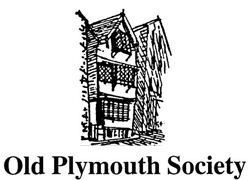by A J Romang
Published December 2012
John Pethick was born in 1828, he lived at Crabtree and at the age of 12 left school to work for his father who was manager of the Dartmoor Granite Works and among his duties supervised the construction of Laira Bridge. John worked on the bridge and at Pope’s Yard, Turnchapel. He worked for William Phillips on the building of the Esplanade, the eight houses being built between 1842 and 1844. By the age of 25 he had gone into partnership with Benjamin Call.
In the early 1860s they were building Elliot Terrace on the Hoe, by 1866 they had built, at their own expense, a new club house for the Royal Western Yacht Club at Numbers 6 and 7, which they let for £170 per annum. In addition they built the soap works at Sutton Road, The Duke of Cornwall Hotel and Chubbs’s Hotel along with many domestic dwellings.
By 1871 the partnership was dissolved, John Pethick retained control and continued the business, helped by his sons. He married in 1846 and had one daughter and 7 sons. Stuart became a surgeon and Roberta veterinary surgeon but John R., Arthur, Benjamin and Nicholas made up the firm of Pethick Brothers.
Amongst their work was the New Guildhall and Municipal buildings opened in 1873/4, final costs nearly £50,000 following a tender for £32,475, The Grand Hotel, the Engineering College at Keyham and No 3 Dock in Devonport Dockyard. They also re-erected Smeaton’s lighthouse on the Hoe for minimal cost.
Further afield they are reported to have built the Vale of Rheidol railway (Aberystwyth to Devils Bridge), the piers for Vauxhall Bridge in London and widened London Bridge. They also constructed many of the railway viaducts in Cornwall and built mansions at Doublebois and Menabilly.
Reif and Pethick were the contractors on the Lydford to Devonport line which included a 600 yard long tunnel. The works were completed in the specified time of 3 years for a cost of some £793,000. They built so extensively around Mutley that part became known as Pethick town. At John’s death he owned around 90 dwellings in 18 different location in the Plymouth area.
He became a Town Councillor in 1874 for the St. Andrew’s ward. He was a strong conservative but philanthropic to the poor. He was involved in building the first workmans’ cottages although it is not clear who paid for them but he was known as ‘Honest John’. He was Mayor from 1898 to 1900.
He was very fond of horses and owned a famous horse called Gamecock but they were to be his undoing. In 1904 he took over the reins of his 4 wheeled dogcart and pair. The reins got beneath the tail of one horse causing them to bolt across Lockyer Street, the carriage hitting the railings outside St. Catherine’s Church. He died in hospital from his injuries. There was a very large number of mourners listed in the newspaper report of the funeral.
He left behind a puzzle which caused the author’s initial interest in his life. The west side of Holyrood Place behind the Hoe was almost certainly built by the Pethicks probably in the 1880s. Each pair of these houses carries a large plaque bearing the Plymouth coat of arms. Were these perhaps put on to promote his ambitions in local politics or were they added later to celebrate becoming Mayor? Perhaps someone has a dated photograph which will solve the puzzle.
Author’s note: Much of this information was taken from old Newspaper reports not from original documents.
